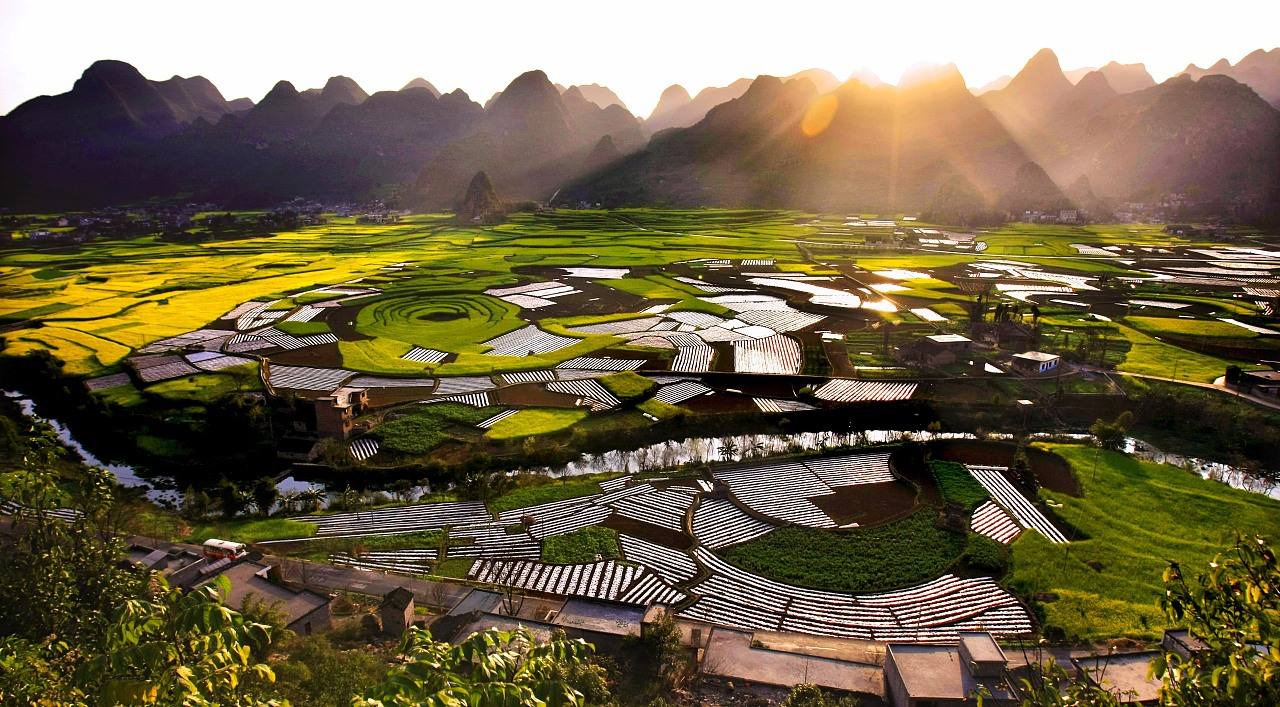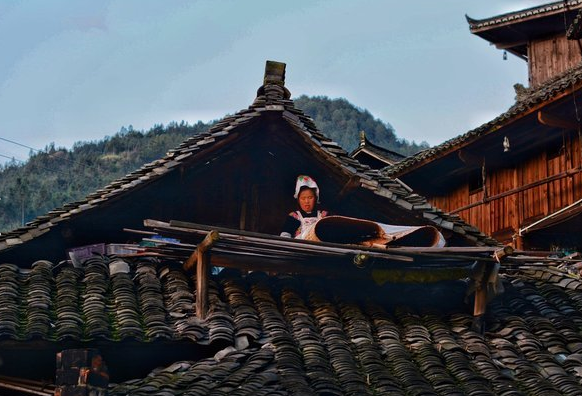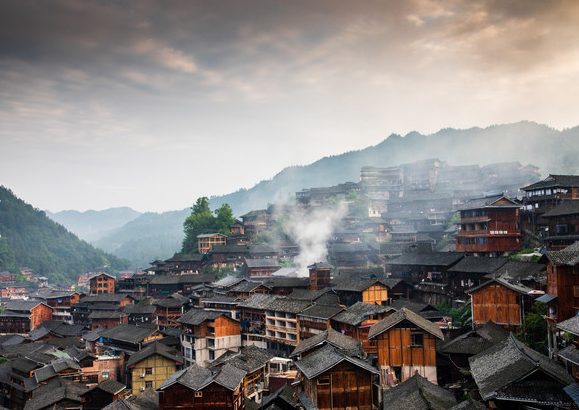24 Hours Hotline: +8613735411378
Email:[email protected]
24 Hours Hotline: +8613735411378
Email:[email protected]

Overview
More than 15 minority groups settled in Guizhou and most of the amazing scenic areas are located in these settled minority areas. In addition to enjoying the scenery, visitors can discover the rich and varied folk cultures of the different minorities. The strong but simple and unsophisticated customs, architectures with unique style, exotic and colorful costumes, and numerous festivals throughout the year, will make tourists feel everything is new and fresh. Hereby we offer the attraction details in the following intended to help the tourists to arrange their trip. We can also customize the tour with any extension destination you desire.
Top Attractions in Guizhou
Jiaxiu Tower
The Jiaxiu Tower, quite similar to the giant'ao' (sea turtle), is on the Nanming River, in Guiyang. This traditional Chinese-style structure was built in 1597, during the Ming Dynasty, and is connected to the banks on both sides of the river by the Fuyu Bridge. It was built by Jiang Dongzhi, the governor of Guizhou province and had been enlarged six times by 1981, when the Guiyang Government set aside funds to repair it. The tower has stood for 400 years and is witness to Guiyang’s past and a symbol of its cultural development.
Jiaxiu Tower has three stories, three eaves, four corners and a dome, with a structure that is unique in early architecture of China. This feature makes the tower famous and enhances its appreciation, attracting tourists and architects to get a close look at it. The tower is around 20 meters high and has upturned eaves supported by 12 stone columns, protected by white carved stone rails. People can enjoy the scenery around the tower, with the 90-m Fuyu Bridge looking like a dragon lying on the water. It passes through the Tower and and has the Hanbi Pavilion on it, with Hanbi Pond and the Shuiyue Platform. To the south of the bridge is the Cuiwei Tower.
Qianling Park
Qianling Park, in the northwestern part of Guiyang, takes its name from Mount Qianling, which known as southern Guizhou's No 1 mountain. The park is covered with thick vegetation and old trees characteristic of the Guizhou Plateau, with more than 1,500 types of flowers and trees and at least 1,000 types of medicinal herbs. Clear springs and strange rocks can be seen everywhere with a lot of rhesus monkeys and birds. Going up the mountain along the winding path, you reach the Hongfu Temple, built at the end of the Ming and beginning of the Qing Dynasty, more than 300 hundred years ago, and one of Guizhou's most famous temples. It and Kylin Cave, at foot of the mountain, and cliff carvings on the mountain are all provincial protected sitesl.
Kaili Folk Museum
Kaili Ethnic Minorities Museum is located in Downtown Kailim, it is actually a collection of Ethnic Minorities culture in Guizhou, where you can have a background knowledge of all minority native culture in this area. It is one of the "100 Distinctive Museums of China", is entitled "the Origin of Chinese Folk Arts". The Kaili Ethnic Minorities Museum has a collection of over ten thousand items of different ethnic groups.
Kaili Ethnic Minorities Museum, which itself is a work in progress, will have 11 exhibition halls when it is completed. Currently there are only 4 exhibition halls open to the public, of which the Minority Customs Hall and the Dragon Boat Hall are the most noteworthy. In the museum human culture, geography, and the national minorities' customs in the south-eastern areas of Guizhou Province are displayed in detail. Writings, pictures and objects of interest are also exhibited here.

Jidao Miao Village
Jidao Long Skirt Miao Village is combined by two villages: Shangzhai and Xiazhai. Shangzhai backs to the mountains. Its front is patched drowsy fields and flowed by a bright clear river, murmuring over its pebbly bed. The village has more than 100 households and about 530 Miao people inhabit there. Xiazhai has 70 households and populated by over 460 Miao people. It features many attractions, such as the Old Geomantic Trees, time-horned granaries, the Cave of the Immortal, the Footprints of Buffalos & Horses, the Song and Dancing Square, and the ancient street. Both two villages have many traditional wooden stilt houses. The houses all look very old and well-designed. They usually have several levels, the domestic animals live in the first level and their owners live in the upper levels.
Qingman Miao Village
Qingman Miao Village is 23 kilometers southwest of Kaili city, in southwest China's Guizhou Province. One of the highlights in Qingman is the opportunity to witness the whole process of traditional Miao clothes-making.
The main material for traditional clothing is homemade cloth spun, woven, and dyed all by the Miao. The locally popular "cotton song" describes the entire process of looking for cotton seed, selecting seed, reclaiming land, sowing, harvesting, getting rid of seed, bowing, spinning, reeling thread, dyeing, and sewing.

Xijiang Miao Village
Xijiang Miao Ethnic Village, is a village with more than 1,000 households of Miao people. Located in the southeast part of Guizhou province, it is the biggest habitation of the Miao ethnic group in the world. The village has preserved the integrity of its traditional wooden houses, the inheritance of the Miao embroidery and silver ornaments with the Miao handicrafts. Here is a slide show of the village and its architecture.
Langde Shang Miao Village
Surrounded by green mountains, Langde Shang Village is situated beside a crystal stream. Several roofed wooden bridges, called "Wind and rain" bridges by the locals, stretches over the stream. Several stone grain mills and mill wheels have been built on both sides of the stream. Ducks can be seen here and there, flapping the wings happily in the water. On the waist of the slope facing the village is a 150-meter-long racecourse and a flat ground, whose area is about 8 mu (mu is a traditional unit of area, equaling to 0.0667 hectare or 1/6 acre). On March 5th of the lunar calendar every year, thousands of young Miao people from the region where the four counties, Leishan, Kaili, Majiang, and Danzhai, have a common boundary, come to the place. They climb the mountains, sing musical dialogues in antiphonal styles, and race horses.
Prev: Guizhou Travel FAQS
Next: Guizhou Dining
Wechat: Chinaprivatetour
24 Hours Hotline:
+8613735411378
* Authentic Experiences: Genuine local experiences that immerse you in the true essence of Chengdu and beyond.
* Safety First: Highest safety standards with secure activities and reliable transportation.
* Customizable Tours: Flexible itineraries tailored to your interests and needs.
* Local Expertise: In-depth knowledge of Chengdu and China, offering exclusive insights.
* Professional Guides: Licensed bilingual guides with over 5 years of experience.
* Comfortable Travel: Experienced drivers and well-maintained vehicles for a smooth journey.
* Sustainable Tourism: Commitment to responsible tourism and supporting local communities.
* Customer-Focused: Personalized service and continuous improvement based on your feedback.
* Free Cancellation: Cancel up to 24 hours before travel for flexibility and peace of mind.
* 24/7 Support: Round-the-clock assistance for any questions or help needed.
1 to 1 tailor-made service from our professional travel advisors for the most sophisticated
Constantly excellent reviews for attraction, hotel and service Competitive price
Local experts provide quality tours Best selected knowledgeable local guides Authentic local restaurants
7*24 hours available to create you a worry-free tour. No Hidden Fees and absolutely no pressure to buy. Secured







